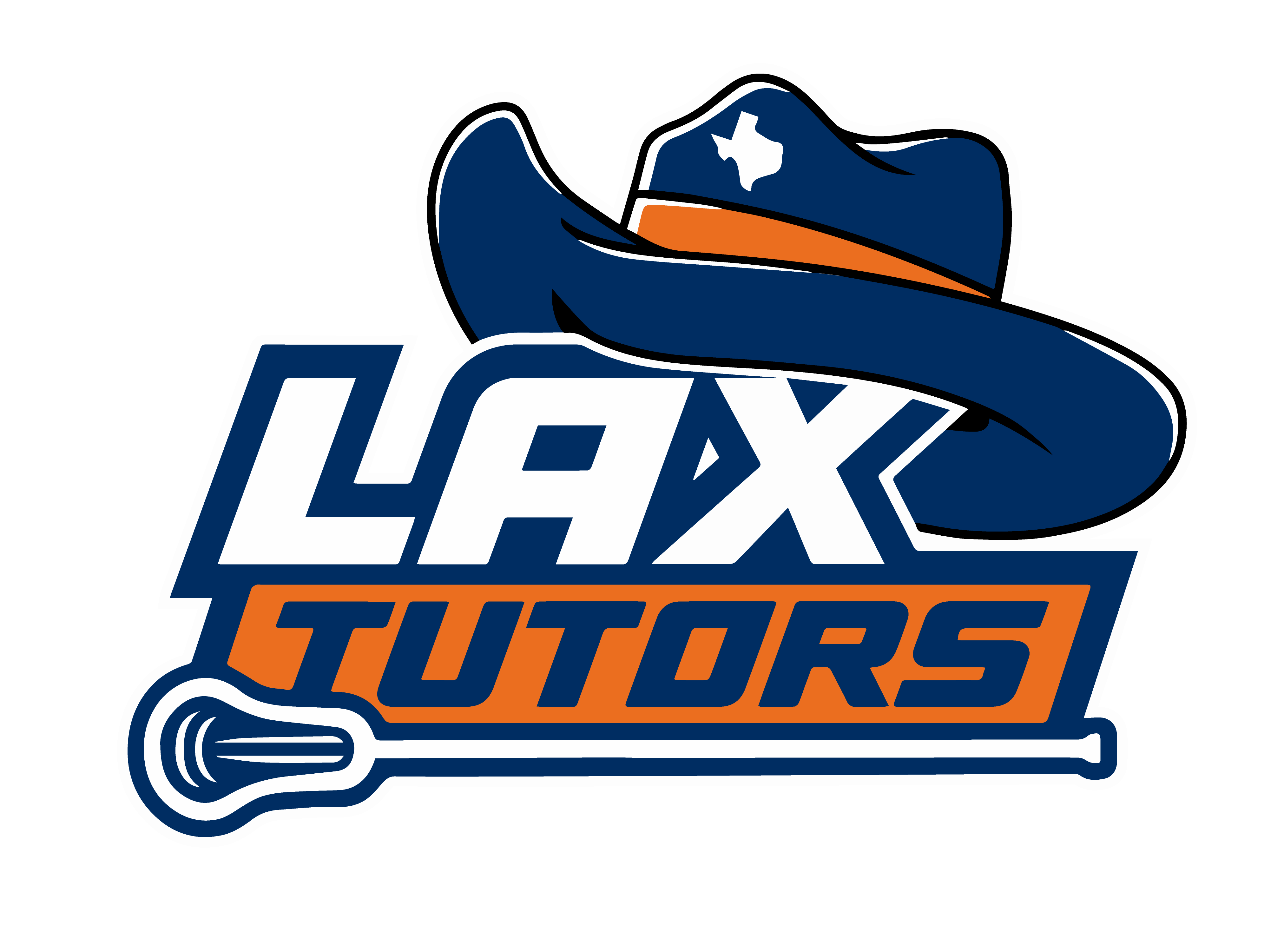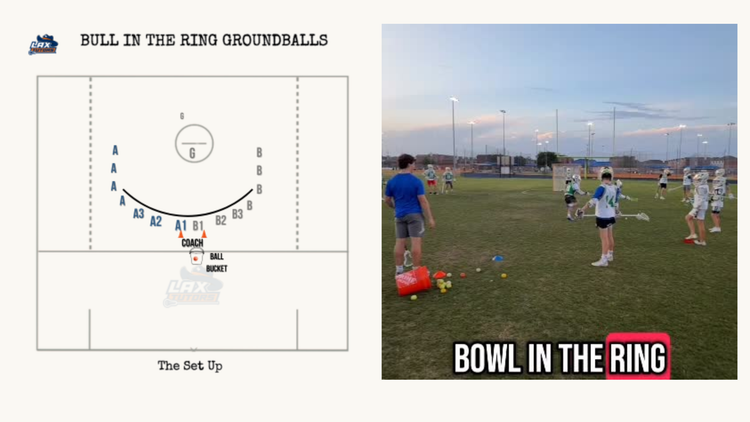Virginia - 1v1 to 3v2 Alley GB's
This drill pushes players to pick up first time groundballs, compete, move the ball, and make quick decisions - great for transition game.
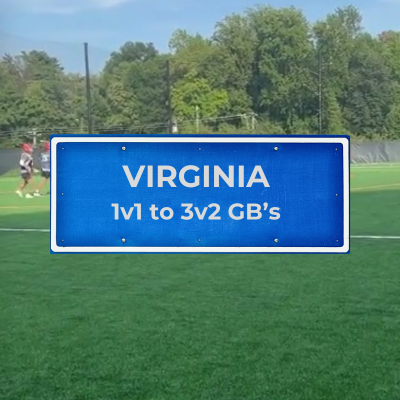
This drill, inspired by a post on UVA’s Instagram, has become a staple in my practices from youth to high school. The setup can vary, but the main focus remains on practicing full-speed ground balls, moving the ball quickly off the ground, and pushing transition. Below, you'll see a UVA rep of the drill followed by my adapted version.
🎥: The Film
0:00
/0:06
Virginia 1v1 to 3v2 GB's
🎯: The Set Up
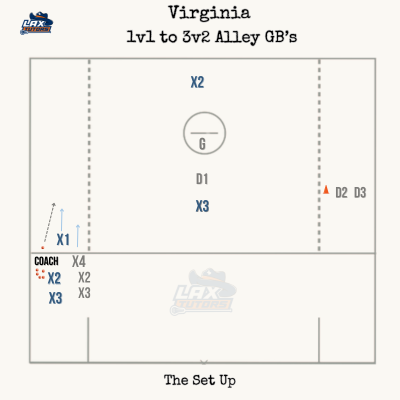
- 2 lines up at the alley on the restraining line (you could put these lines anywhere based on where you want the gb). In the example above we have X1 vs X4. Notice how X1 has a head start before ball is rolled out. (If you want it to be more of a gb battle start players even)
- 1 offensive player at X (X2), one offensive player on the crease (X3)
- Start 1 defenseman on the crease - all others on opposite wing.
🥍 The Rep:

- The first two players in line (X1 & X4) get ready for coach to roll out a gb.
- On the roll of the ball - X1 & X4 go for a 1v1 GB - Notice X1 has a head start to give him an advantage which allows him to focus on running through the ball with pressure on your back. X4 job is to contest the groundball then chase and make it difficult for the outlet.
- Once 1 player picks up the GB (in the above X1) they move it to the adjacent outlet (X2) who is showing for the ball (X2 in example). Big emphasis here - don't stand still waiting for the ball.
- Please note - In the Virginia rep shown on the film above - X4 just stays on X1 once the ball is moved to X2. However, we put in a wrinkle into the drill at our team practices. Whoever dosen't come up with the 1v1 groundball - then sprints in the hole to be the second defender - thus making it a 3v2 with Blue X1, X2 & X3 on offense and dark X4 & D1 on defense
- Once the ball is moved - the player player who lost the 1v1 groundball (x4) sprints into the hole to play defense.
- If the offense is quick enough they will have a quick 2v1 - if the defense does a good job and slow plays the slide - X4 will have time to get in a play defense in a 3v2.
- The rep is played out until a shot, turnover or coach kills the rep
♻️ The Rotation:
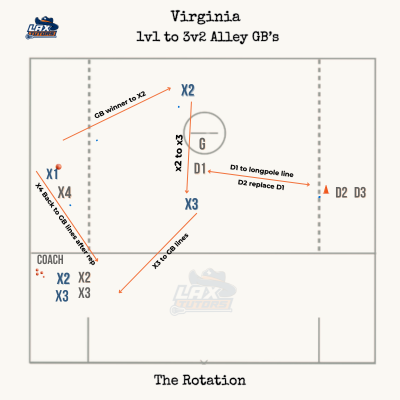
- Offense rotation
- Winner of the 1v1 groundball goes to X
- Player who was at X (X2) goes to the crease
- Crease player heads to the 1v1 gb line (either line)
- Defense Rotation
- Loser of the 1v1 groundball is on defense - after the rep is finished returns to the 1v1 lines (either line, doesn't matter, unless competing offense vs defense)
- The defender who was on the crease rotates out with the far wing defender line D2 replaces D1.
- If you don't want a defender line on the wing - you can get rid of that line and have the loser of the groundball go to the crease and play start on crease on the next rep.
🥅 Drill Goals:
- Offense
- Move the ball quickly off the ground - "Fast off the grass"
- Move your feet and show adjacent to the ball
- Play fast but under control
- Finish your opportunities
- Defense
- Slow play the slide - don't get sucked out deep.
- Sticks up in passing lanes
- Make offense make extra pass
↔️ Fit to your teams needs:
- You could set up your groundball lines in different spots on the field. (Example other wing would work more on lefty reps)
- Make it an even 1v1 groundball at the start - this creates a 50/50 gb situation instead of the prior focus of running through the ball.
- Just like the UVA film - you could have the 1v1 groundball players stay out of the offense (and focus on pressuring the player who came up with the ball) - keeping it a 2v1 instead of a 3v2.
- Change your rotations based on available number of players.
- Keep it competitive - put players on teams and keep score. Example - 1 point for the 1v1 groundball if defense comes up with it. Defense then drops it and gets in to play the 3v2 for another point.
- 1 point for offense on a goal.
- 1 point for defense for save or clear or knock down (we refer to them as nuggets).
This drill is a high-energy, game-like scenario that pushes players to compete, communicate, and make quick decisions—essential skills for transition play.
